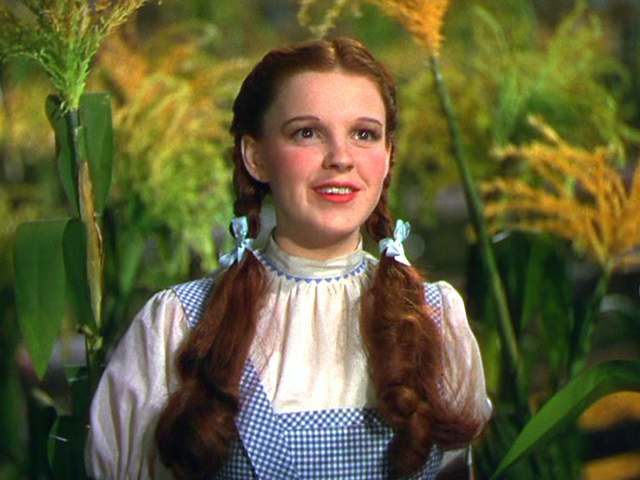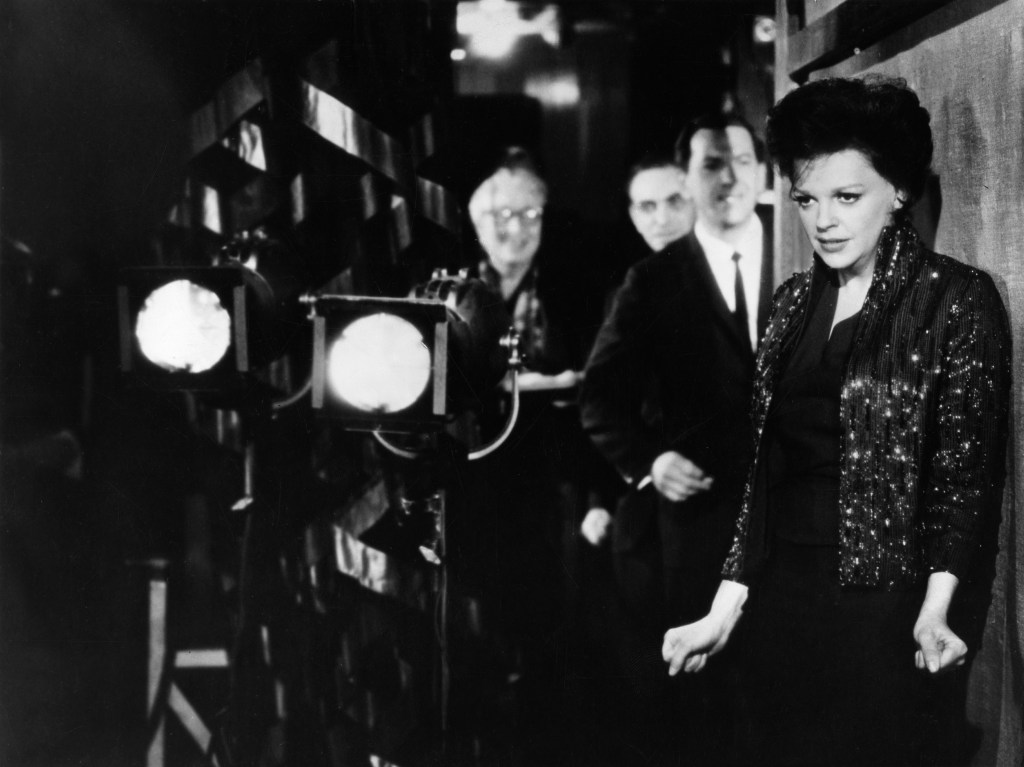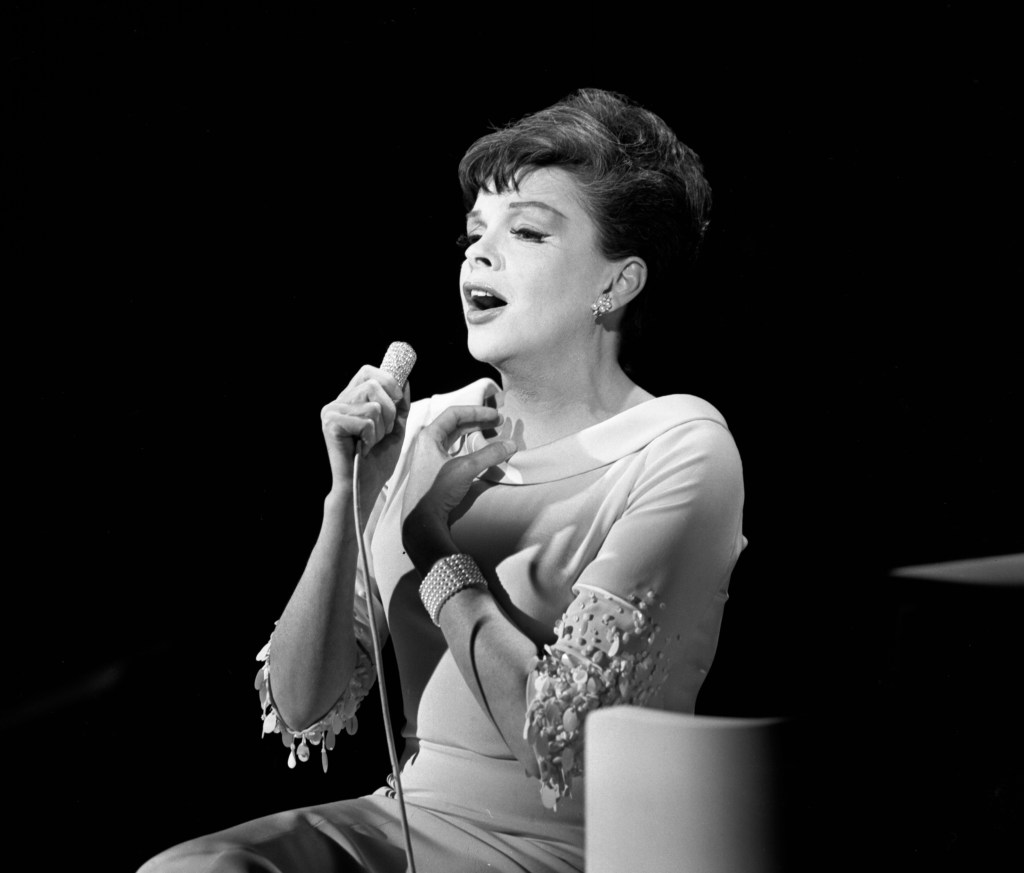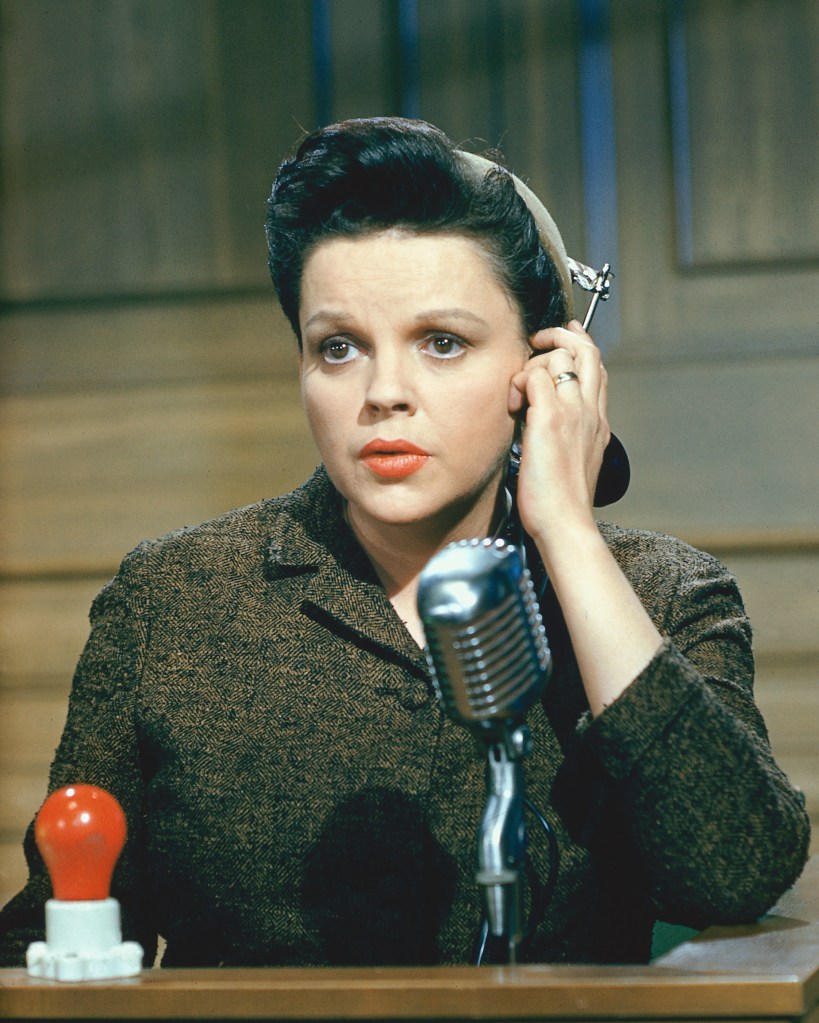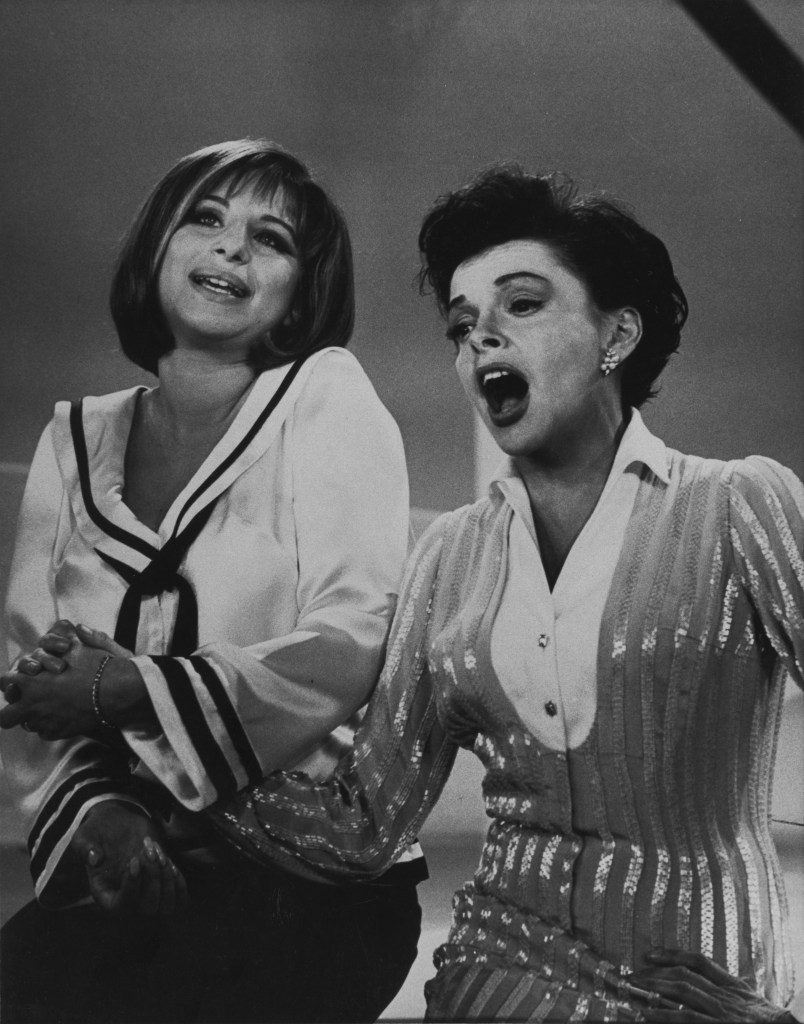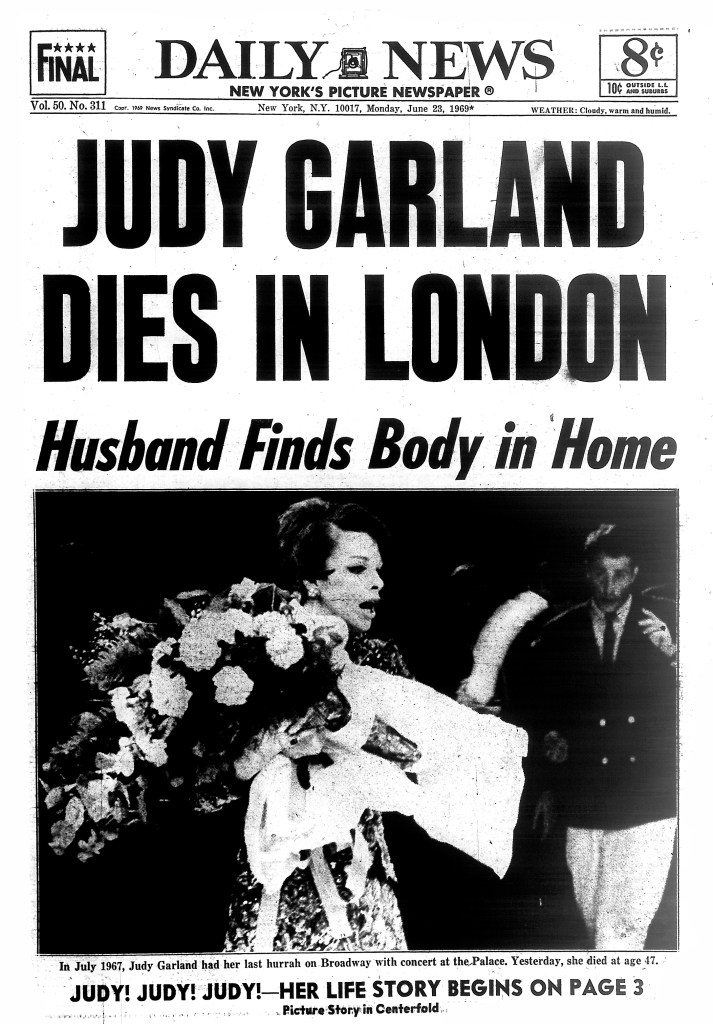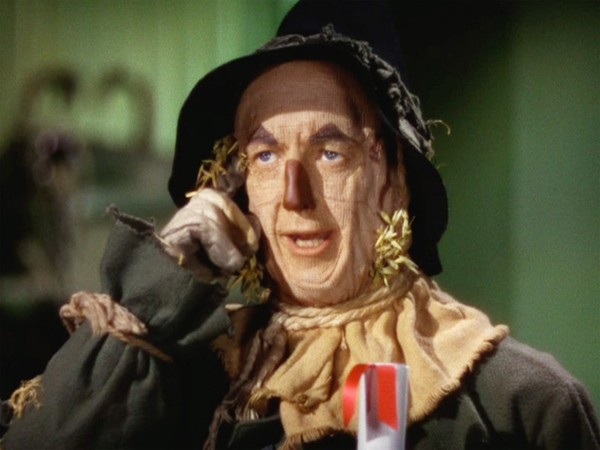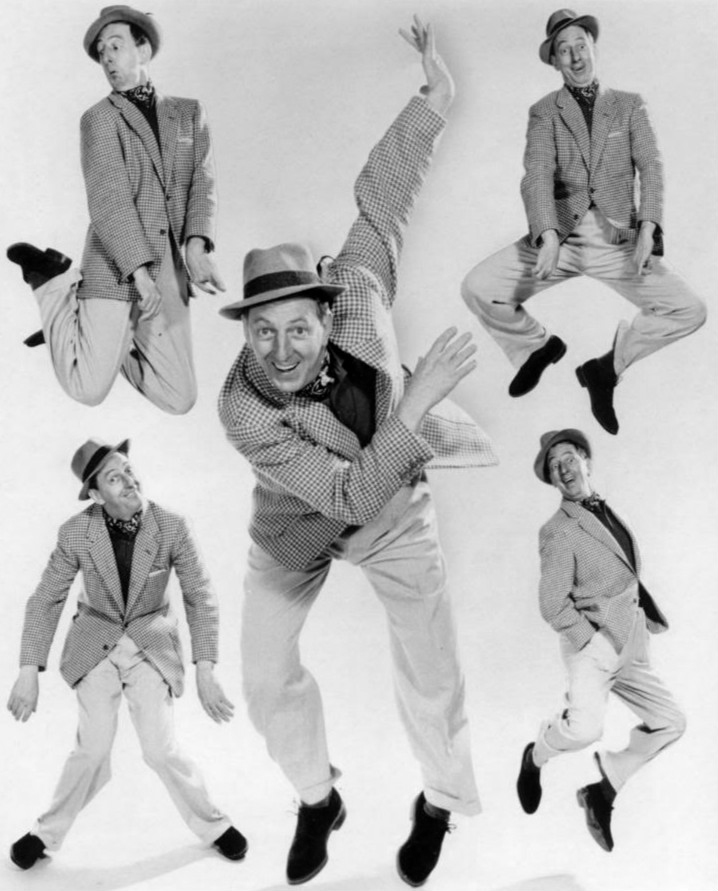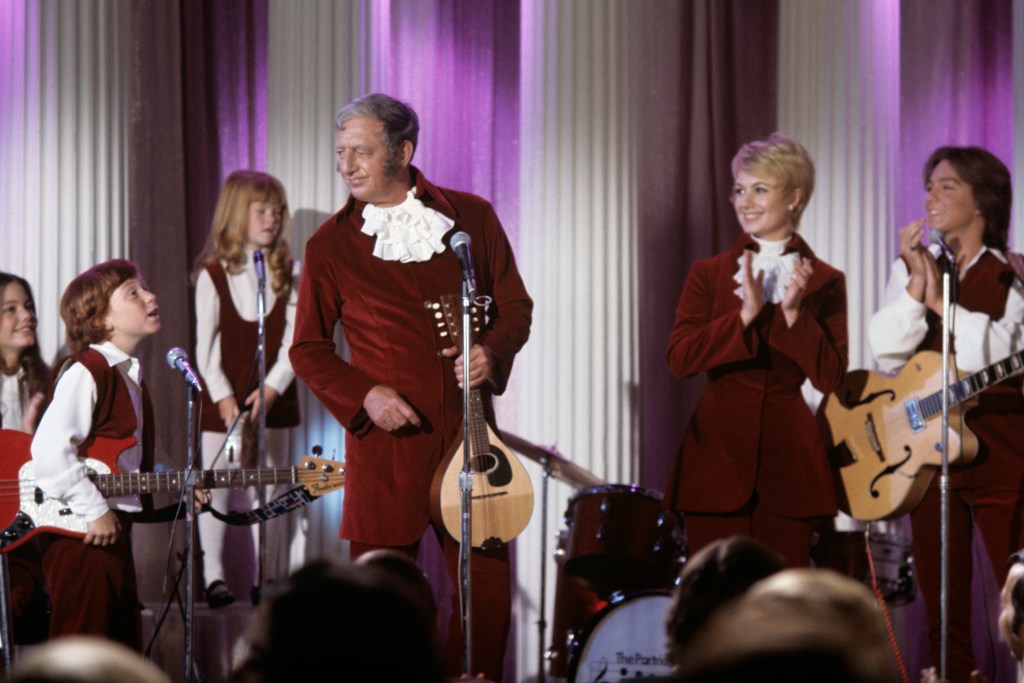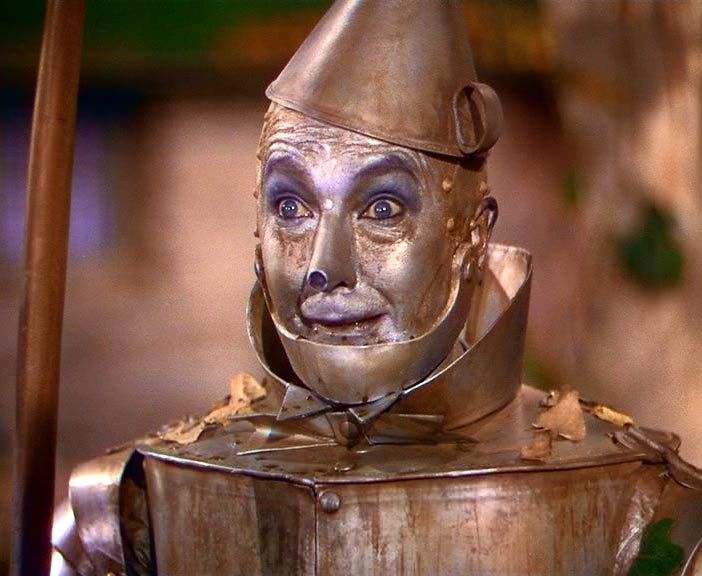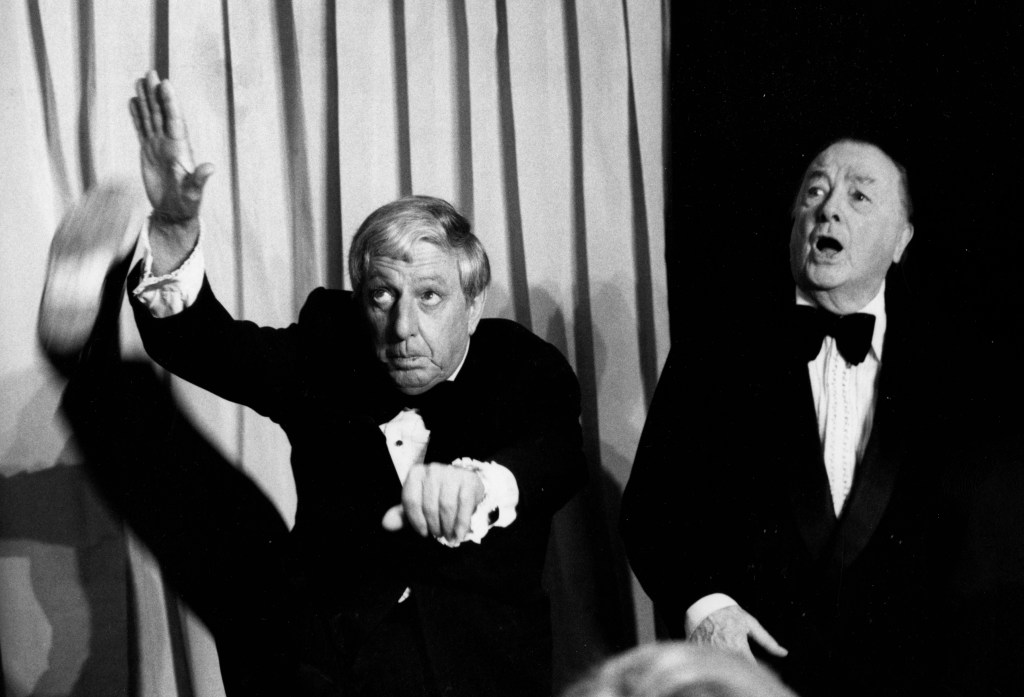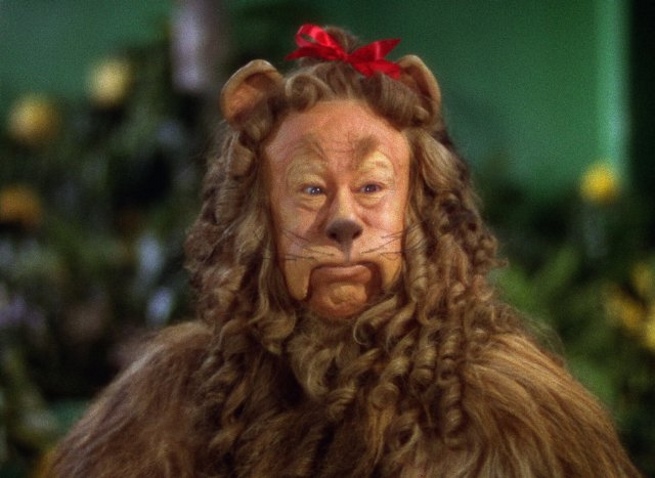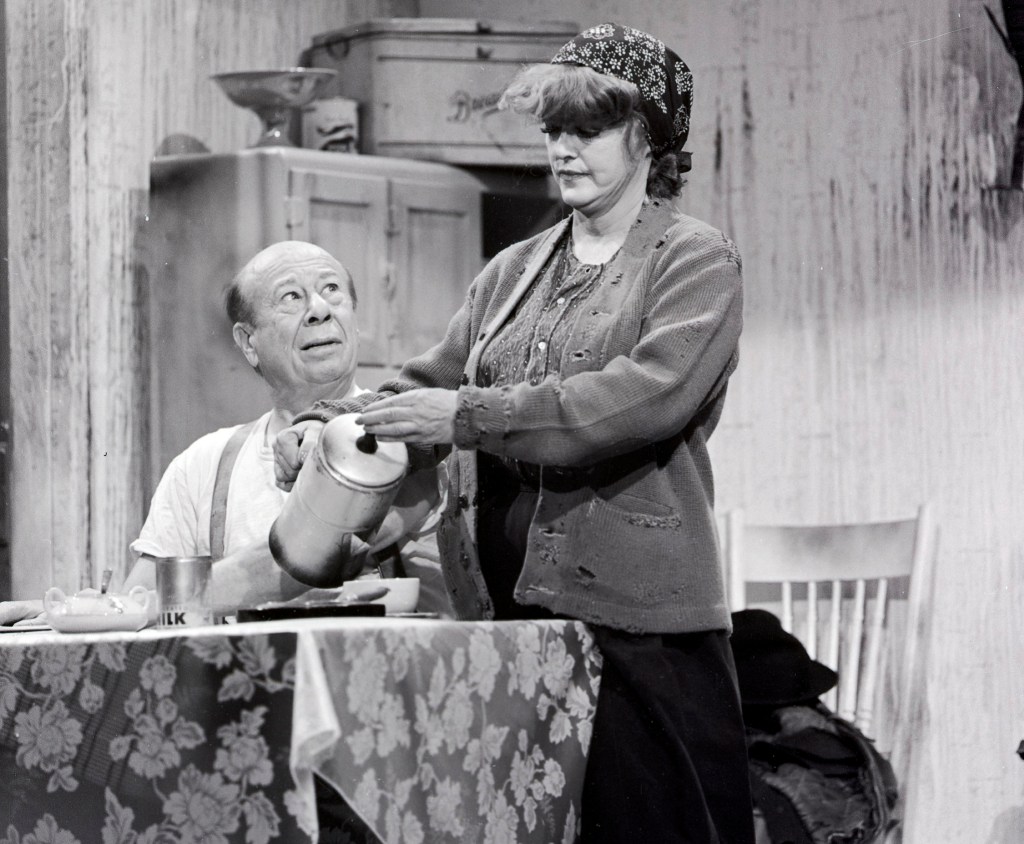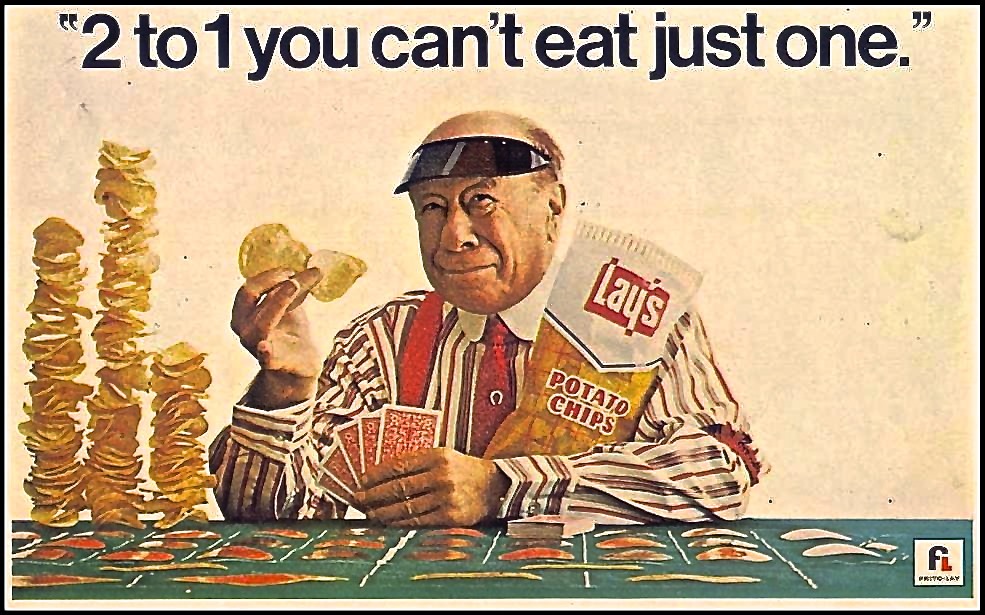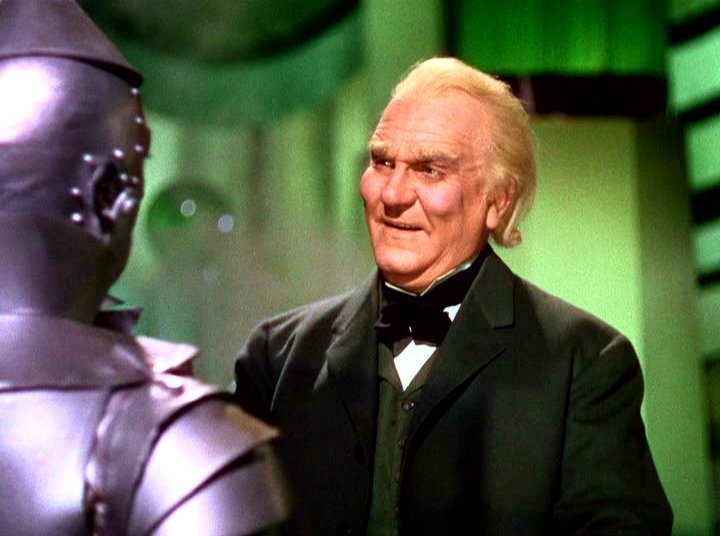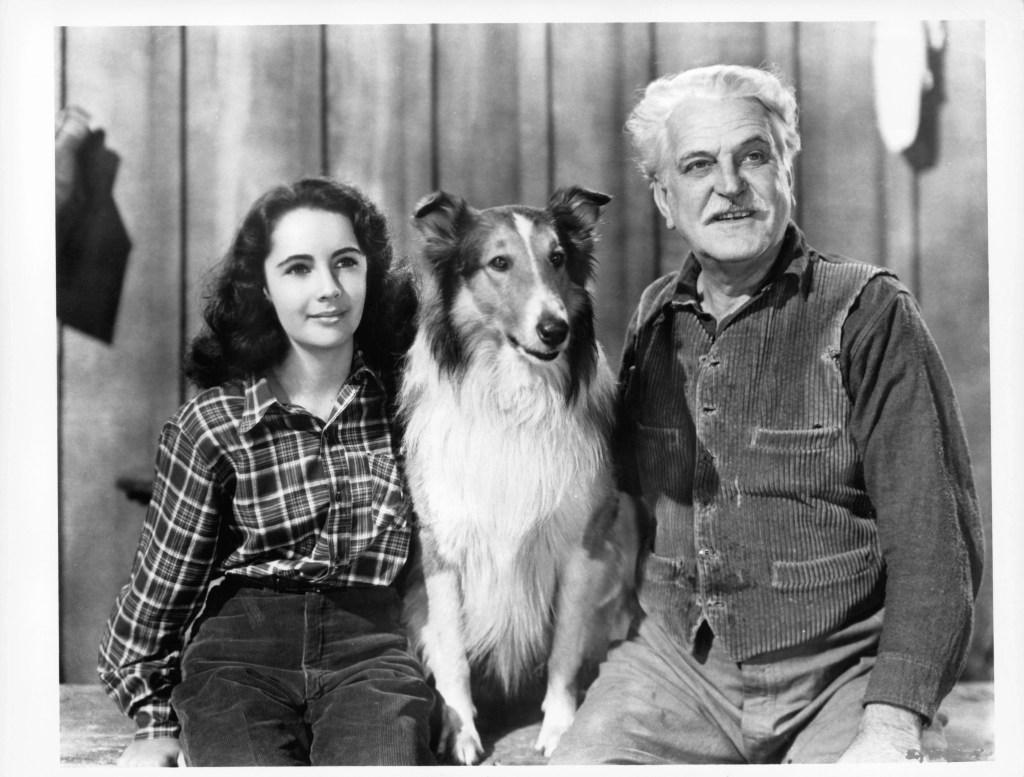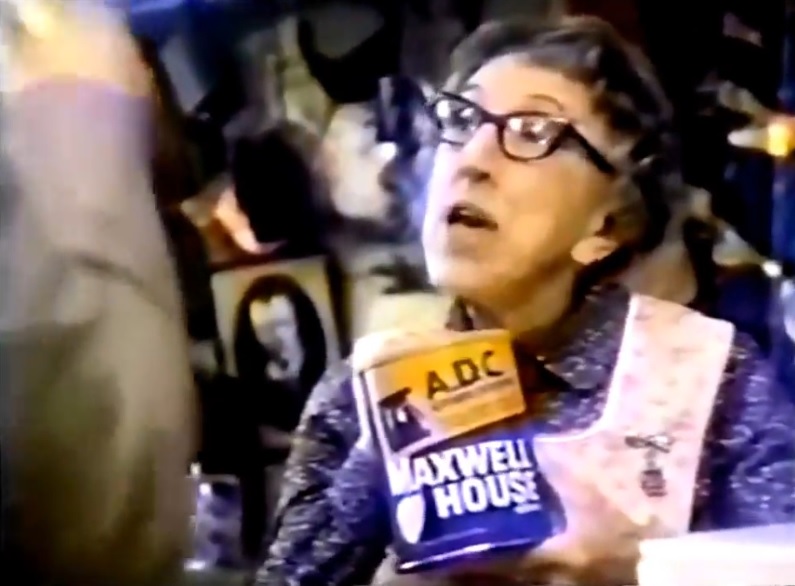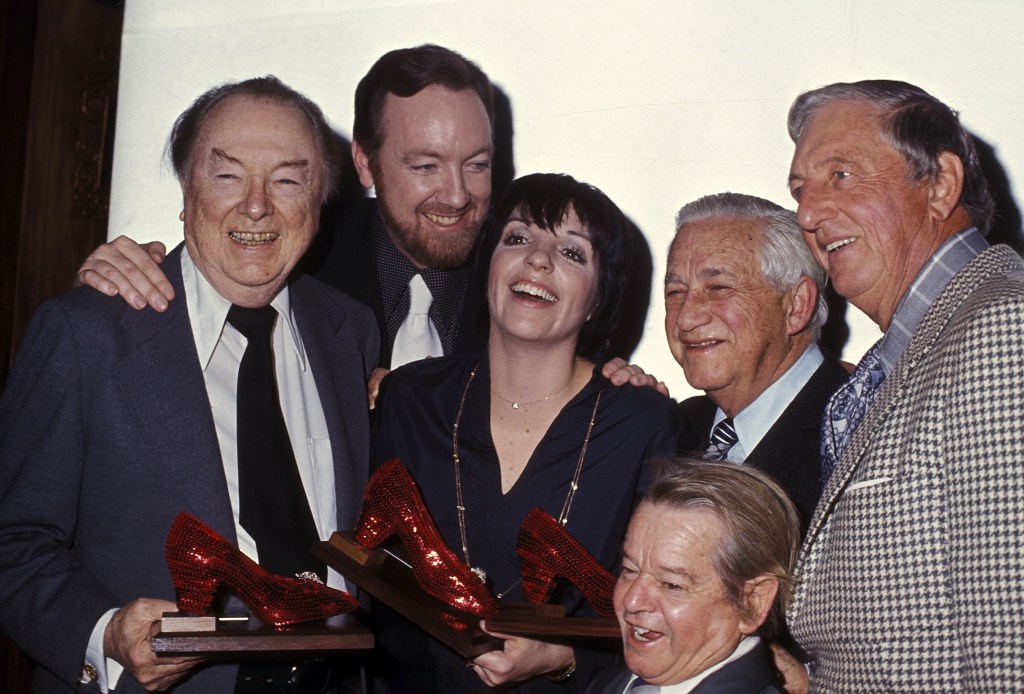‘The Wizard of Oz’ and Beyond: Life for the Cast After the Yellow Brick Road
Life off the Yellow Brick Road could present challenges to Judy Garland, Ray Bolger, Jack Haley and Bert Lahr
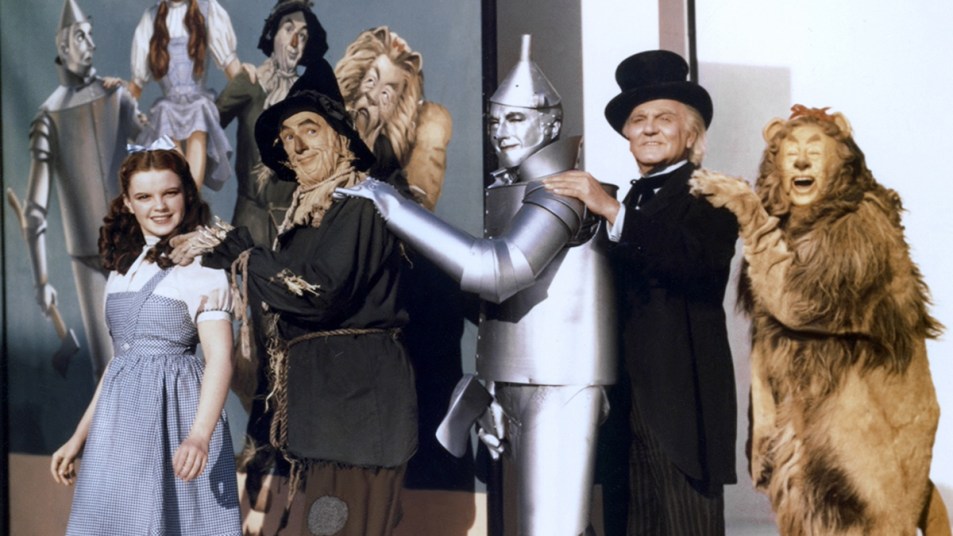
When you fall in love with a movie and its cast, like the world did with 1939’s The Wizard of Oz, there’s a tendency to lock the film and its performers in a little bubble inside your heart and imagination. You may know the cast, with Judy Garland leading them all, had private lives and careers that preceded and went on long after the film, but there’s also a part of us that forever thinks of them as those characters off to meet the Wizard.
And whatever course their lives took, the child in all of us remains eternally grateful to each and every one of them. Obviously, they couldn’t have known it at the time, but in that journey down the Yellow Brick Road to bring The Wizard of Oz to life, they achieved a bit of immortality for themselves and gave us the perfect means of traveling somewhere over the rainbow. Again and again.
-
Judy Garland, Forever Our Dorothy
Warner Bros Well documented is the fact that Judy, born June 22, 1922, would spend much of her life worrying about her self-image, not helped by the fact that the studio (MGM) kept trying to change her looks to fit their needs rather than accept her for who she was. On top of that, was her addiction to alcohol and amphetamines, the latter actually prescribed by the studio to help their stars keep up with the insane pace of filmmaking they insisted on. All of this, of course, was behind the scenes. In 1939, she appeared on camera in The Wizard of Oz (actually her eighth film) as Dorothy Gale, and America really fell in love with her.
-
Judy's Complex Life After 'Oz'
Getty Images Did you realize that between 1940 and 1963 Judy Garland made 28 movies? Very quickly, she did what a lot of young performers had been unable to do: make the transition from kid to adult performer, co-starring with Gene Kelly in 1942's For Me and My Girl, and enjoying a massive hit two years later in Meet Me in St. Louis. Then, in 1945, she played a straight dramatic role (without any singing) in The Clock, which co-starred Robert Walker.
Behind the scenes, things were not going so well. By 1947, at which time she's already been married twice, Judy suffered a nervous breakdown, yet somehow pulled it all together and ended up co-starring with Fred Astaire the following year in Easter Parade, which became her biggest hit for MGM. But success meant the studio pushed harder, which impacted Judy in such a way that her addiction for sleeping pills, morphine, and alcohol was increasing.
-
Judy's Struggles Continued
Getty Images Judy was supposed to star in the film version of Ethel Merman's hit Broadway show Annie Get Your Gun, playing the part of Annie Oakley, which she was unenthusiastic about — particularly trying to step into Ethel's role. Ultimately, her behavior got her fired from the film. During all of this, the doctors of the time prescribed electroshock therapy to help her deal with depression, which all came after a suicide attempt. Then, during an extensive hospital stay, she was able to get off of the different vices she had become dependent on. Sadly, this was short-lived as she went back into that pattern of drug use during the shooting of the Gene Kelly film Summer Stock, causing frequent delays and the film, despite being a hit, actually lost money. As a result, she and MGM went their separate ways in 1950.
-
-
Managing a Comeback
Getty Images Where Judy found strength was in the thing she did best: singing. She went on a four-month concert tour of Britain and Ireland, selling out everywhere she went. The same thing happened when she had performances in Manhattan later that year. Filled with renewed confidence, and no longer being controlled by a studio, she starred in the 1954 remake of A Star is Born that she and then-husband Sidney Luft produced. Although at its premiere the film was met with acclaim from critics and the public, Jack Warner (the head of Warner Bros.) felt it was too long and had 30 minutes removed. In the end, the film ended up losing money, though Judy was nominated for an Academy Award for her performance.
In the early 1960s, she starred in some truly impressive films, including Stanley Kramer's courtroom drama Judgment at Nuremberg, Gay Purr-ee, A Child is Waiting, and I Could Go on Singing, which ended up being her last film.
-
'The Judy Garland Show'
Barbara Striesand with Judy Garland on her show Getty Images For the 1963 to 1964 television season, due to tax problems with the IRS through no fault of her own (beyond trusting the wrong people), she starred in The Judy Garland Show for CBS. The variety series only lasted one year due a combination of competition from Bonzanza, which it couldn’t beat; and behind the scenes turmoil throughout production with endless tinkering by executive. In the end, what did stand out was Judy’s performances (both telling stories of her life and singing) and an incredible roster of guest stars, including in one particularly memorable episode, Ethel Merman and Barbra Streisand.
Of that particular show, Judy Garland and Wizard of Oz historian John Fricke says, “To show you Judy’s instincts, two days before the episode that aired on October 6, 1963, she insisted on having 21-year-old Barbra Streisand as her guest. This was pre-Funny Girl on Broadway, but Barbra had made successful albums, was selling out nightclubs, and developing a TV following. Judy had seen her at the Cocoanut Grove that summer in L.A. and said, ‘Before she leaves town, I have got to have her on my show.’ CBS wasn’t keen on that idea, but Judy insisted.”
The show had the “Tea for Two” segment, where Judy would sit and talk this her guests. “This night,” he explains, “she sat and talked with Barbra, and Judy complimented her: ‘One thing I love about you is that you really sing out and belt out a song. There are very few of us left!’ Of course, the audience applauded that and when they stopped, the camera switched to Ethel Merman, sitting in – and ‘singing out!’ — from the audience. This was planned, but the audience didn’t know and Barbra didn’t know. So Judy brought Ethel up on stage; the three of them talked about Funny Girl and – with Judy’s full encouragement and delight — Ethel kind of took over for four minutes.
“Judy,” he adds, “was the biggest cheerleader in the world for her guest stars. To wrap up this impromptu segment, all three of them sang ‘There’s No Business Like Show Business.’ This show was sensational; Judy’s duets with Barbra are among the greatest pop singing in TV history. CBS actually aired Judy and Barbra less than 48 hours after it had been taped.”
-
Sadly, It All Ends Here
Getty Images Judy was cast in one more film, 1967's Valley of the Dolls, but when she began missing rehearsals, she was fired and replaced by Susan Hayward. In response, she went back to more concert tours, including a 27-show run at New York's Palace Theatre. In 1969, she returned to London for a five-week run at the Talk of the Town nightclub. In March of that year, she married her fifth husband, Mickey Deans. Four months later, on June 22, 1969 (while still in London), he found her body in their rented home. Judy was gone, a victim of an overdose of barbiturates. Her pain had come to an end.
-
-
Ray Bolger as the Scarecrow
Warner Bros Ray Bolger, born January 10, 1904, began his career in a tapdancing act on vaudeville. He signed with MGM in 1936, and pretty quickly starred in The Great Ziegfeld, Sweethearts and Rosalie, the latter two of which co-starred the Wizard himself, Frank Morgan. When it came time for The Wizard of Oz, he was originally cast as the Tin Woodman, with Buddy Ebsen (years later to play Jed Clampett on The Beverly Hillbillies) being assigned the role of the Scarecrow. Eventually their roles were swapped, but then Buddy had an allergic reaction to the Tin Man makeup and needed to leave the production. Nonetheless, Ray's position in movie history was locked in place.
-
Ray Gets a TV Show of His Own
YouTube During World War II, Ray toured as part of the USO. Afterward, he starred in a number of Broadway shows between 1942 and 1952, but what few may remember at this point is that he had his own sitcom from 1953-55, which was originally called Where's Raymond? and was retitled The Ray Bolger Show in its second year. In it, he played song-and-dance man Ray Wallace who is usually this close to being late for his performances.
In 1955 he spoke to The San Bernardino County Sun and was extremely enthusiastic about working in television. “The theater and the opportunity to reach perfection through the repetition of the long runs is a thrill and a satisfaction of a unique kind,” he said. “Television has its own satisfactions. One can never reach the perfection one would like, because it is forever time to do next week’s show. But there is enormous satisfaction in the millions of people one can reach. Television has not even begun to attain its potential, and with color coming so fast, it staggers the imagination.” You can’t say he was wrong!
-
Ray Was a Partridge ... Sort of
Getty Images After his sitcom ended its run, things kind of slowed for Ray. He appeared in a few films in small roles, and on stage in 1962 productions of All-American and 1969's Come Summer. Much of the rest of his career was made up of guest starring appearances. Many people remember him as Shirley Jones' father, "Grandpa Renfrew," in The Partridge Family, although Shirley apparently wasn't a fan, writing of him in her biography, "He was a bit irritable and insisted that everything had to be his way." Other shows he appeared on included Nanny and the Professor, The Love Boat, Fantasy Island, Little House on the Prairie, Battlestar Galactica, and, in what was his final appearance, a 1984 episode of Diff'rent Strokes. Sadly, Ray died three years later on January 15 from bladder cancer. He was 83.
Of The Wizard of Oz he said, “I knew that I was taking part in a strange kind of adventure. Everything had to be invented for the picture — the effects, the sound, the Technicolor. It was all new. But when the reviews came out, it was a terrific disappointment. The picture got terrible notices. It was only when The Wizard of Oz came into the home with television that it redeemed itself. Then it was no longer a picture, it was an institution.”
-
-
Jack Haley as the Tin Woodman
Warner Bros Born on Aug. 10, 1897, Jack Haley, like many of his contemporaries, got his start as a singer/dancer/comedian on vaudeville and, prior to The Wizard of Oz he appeared in 13 short films, 22 features, five shows on Broadway, and hosted The Jack Haley Show on radio from 1937-39. Then, of course, Buddy Ebsen turned out to be allergic to the spray paint used to make him the Tin Man, and Jack replaced him, adjustments in the makeup being made in the interim. In coming up with the Tin Man's voice, Jack emulated the softly spoken tones he would use to read bedtime stories to his children.
“When you’re playing for kids,” he would tell The Daily Item, “you’re playing for the toughest audience in the world. The grown people look at it just to be entertained, but the kids look at it … to believe it.”
-
From Hollywood Star to Real Estate Mogul
Getty Images Following The Wizard of Oz, Jack Haley did 13 more films and four additional Broadway shows, most of them musical comedies. None, unfortunately, had the same sort of impact as his portrayal of the Tin Man had. Eventually, he decided to drop out of acting and got into real estate. Jack Haley passed away of a heart attack on June 6, 1979, at the age of 81.
Upon hearing of his death, Ray Bolger offered, “A very dear friend — a man I loved and adored — is gone. It will always be an honor to have been with him in a film that has become an international classic.”
-
Bert Lahr as the Cowardly Lion
Warner Bros If there is anyone who steals the show in The Wizard of Oz, it's Bert Lahr as the Cowardly Lion. Unlike his co-stars, he was allowed to ad-lib and by all reports he slowed production down, because everyone had to wait for all the others to stop laughing at his antics.
His costume was made of actual lion fur, which actually made it incredibly hot and uncomfortable throughout production. When confronted with the question of whether or not he was afraid of typecasting, Bert quipped, "Yeah, but how many parts are there for lions?"
-
-
Life Before and After 'Cowardice'
Getty Images Bert Lahr was actually born Irving Lahrheim on Aug. 13, 1895. At the age of 15, he joined a juvenile vaudeville act although he quickly worked his way to the lead in the Columbia Burlesque Circuit. His success brought him to Broadway in 1927 in the show Delmar's Revels and, prior to Oz, he appeared in nine short films, six features, and seven more stage productions.
-
He Bet You Couldn't Eat Just One
YouTube Bert did do some television work, appearing on broadcast productions of Let's Face It, The Fantasticks, Anything Goes, and Barnaby. He also starred in commercials, including a series produced for Lays potato chips under their campaign of "Betcha can't eat just one.” Bert died on Dec. 4, 1967 at the age of 72 while shooting the film The Night They Raided Minsky's. It was reported he had died of pneumonia, but it turned out that it was cancer, which he didn't know he had.
-
Bert's Daughter Jane Remembers Her Dad
The gravesite of the Cowardly Lion, Bert Lahr Courtesy Jane Lahr When asked for a special memory of her father, his daughter, Jane Lahr, “My father would never watch his own movie work, because he didn’t really like his movies except for Zaza. When The Wizard of Oz came to TV, he never watched it until very close to the end of his life. I was home from college and it came on television and he watched it. And he thought, ‘Hmm, that’s okay. That was good.’ He was a great stage performer, because of his energy and his physicality and his sounds. He was a perfect Lion, because even when he was a vaudevillian, he made these animal sounds. He had all of the body movements, all of the power, all of the physicality, but he also had a sweetness and a pathos — a vulnerability that we all, as human beings, understand. We love that and so, in a way, at the end of the movie, when Judy Garland kisses Ray Bolger, the Scarecrow, and says, ‘I’m going to miss you most of all,’ I always thought, ‘Oh, you are not. You’re going to miss the Lion most of all, because he was the most adorable.’”
Another memory that comes to mind was when she and her brother John visited Bert’s gravesite, which, they discovered, was not getting the “perpetual care” that it was supposed to. “But, on his stone,” Jane reflects, “a child had left a toy lion and that speaks to me of Dad. We fixed up the gravesite, I planted a plant and we moved the little toy lion right up front and left everything in good shape. But that’s when I really think of Dad; the thought of that child leaving that lion. I can see a mother with a little boy saying, ‘Oh, this is the Lion in The Wizard of Oz’ and the toy is left in tribute. It’s so sweet.”
-
-
Frank Morgan as the Wizard
Warner Bros The original casting choice for the Wizard of Oz had been comedian W.C. Fields (actually he was second — Ed Wynn rejected the role as being too small), but after negotiations dragged on, they dropped the idea and took on contract player Frank Morgan. Born June 1, 1890, he was the ideal choice and actually went on to play the additional Wizard of Oz characters Professor Marvel, the Gatekeeper, the Carriage Driver, and the Guard.
-
Character Actor in Demand
Getty Images Between 1916 and 1939, Frank Morgan starred in an incredible 66 movies, with an additional 33 after (all by 1950). Along the way, he found himself nominated for a pair of Academy Awards, in the category of Best Actor for 1934's The Affairs of Cellini, and Best Supporting Actor for 1942's Tortilla Flat. As if all of that wasn't enough, Frank had a successful 1947 radio series The Fabulous Dr. Tweedy, and recorded numerous children's records. He was a character actor very much in demand throughout his life, and his next-to-last role was in the James Stewart film The Stratton Story, released in 1949; followed by the posthumous release of 1950's Key to the City.
Frank died of a heart attack on Sept. 18, 1949, while starring in the film adaptation of Annie Get Your Gun (the same film that Judy Garland was signed for but released from).
-
Margaret Hamilton as the Wicked Witch of the West
Warner Bros C'mon, back in the day do you know anyone who gave more kids nightmares than Margaret Hamilton's Wicked Witch of the West? And let's not even talk about her army of winged monkeys! Which is ironic, considering that, by all accounts, the actress was actually a sweet lady.
On the film's DVD commentary, she reflected on being cast: "I was in need of money at the time, I had done about six pictures for MGM and my agent called. I said, 'Yes?' and he said 'Maggie, they want you to play a part on the Wizard.' I said to myself, 'Oh, boy, The Wizard of Oz! That has been my favorite book since I was four.' And I asked him what part, and he said, 'The Witch,' and I said, 'The Witch?!', and he said, 'What else?'"
-
-
More Than a Witch
Getty Images Born Dec. 9, 1902, Margaret began scoring work as a character actress early on (her looks, even by her own admission, prevented her from getting anything glamorous). Her first film was 1933's Zoo in Budapest, followed by 25 more before her most famous role. After Oz’s release she appeared in 47 more, all in supporting roles.
She made some TV appearances on kid series like The Paul Winchell and Jerry Mahoney Show (on which she was a cast member from 1953-54), Car 54, Where Are You?, The Addams Family, the TV movie The Night Strangler, and The Paul Lynde Halloween Special. Additionally, she was a regular on the soap operas The Secret Storm and As the World Turns. Margaret died on May 16, 1985 of a heart attack at 82, though she had also been battling Alzheimer's disease.
-
Good to the Last Drop
YouTube No discussion of Margaret Hamilton is complete without remembering her Maxwell House coffee TV commercials. She played a shopkeeper (whose personality, we should point out, couldn't be any more opposite to that of the Wicked Witch of the West) named Cora.
-
'Oz' Reunion
Getty Images And let us remember that wonderful Wizard of Oz reunion. On March 4, 1976, the Center of Films for Children held the First Annual Children's Hall of Fame Awards, and the Ruby Slipper Salute that featured a Wizard of Oz reunion. Those attending were Jack Haley (Tin Man), his son, producer Jack Haley, Jr.; Liza Minnelli (Judy Garland's daughter), producer Mervyn LeRoy, Ray Bolger (Scarecrow), and Billy Curtis (one of the Munchkins).
-

